News
-

Gene Sequencing, Fast and Precise
Dr. Leonid Yavits recently won a generous grant awarded by the EU, for a four-year project in which he will be developing algorithms and methods of in-memory computing, to be used in Biocomputing applications
-
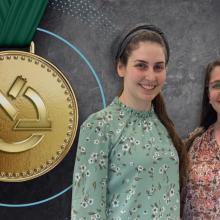
Congratulations, Winners of the TEVA Bio-Innovation Scholarship!
PhD students Michal Danino Levi of Dr. Shahar Alon’s lab, and Reut Plen of Prof. Orit Shefi’s lab, were admitted to TEVA’s bio-innovation scholarship program for 2023. In addition to a generous stipend, this prestigious program includes mentorship from industry experts and is designed to support and promote studies in the field of biological treatments, as well as collaborations in this field between academia and the industry. Only a select few outstanding doctoral students are accepted each year, based on personal performance in school and in research. This year, two of the lucky winners are from our very own Faculty of Engineering.
-
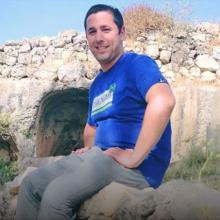
Cloaking in Memoriam
Faculty alumnus Moshe Gamliel suggested a new term in optics to the Academy of the Hebrew Language, in memory of Dany Gonen ZL who was killed 8 years ago. This week, the Academy’s plenary committee approved the new term.
-
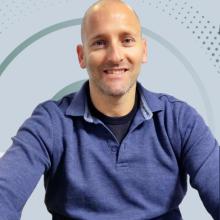
PhD student by day, author by night
In October 2022, Noam Kalush started working on his PhD at Prof. Hillel Kugler’s lab. Earlier that year he published his first book of prose, and a crowdfunding campaign for the second one is already underway.
-

New from the Faculty of Engineering: The Data Engineering Program
The new and unique program will be starting in the next semester. Prof. Sharon Gannot, who will be leading the program, wants you to join, and shares all there is to know.
-

Opening the Black Box
Dr. Tom Tirer’s work combines signal processing with deep learning and optimization tools, with the goal of developing high-performance, interpretable algorithms
-

When Engineered Germs Meet Nanotechnology
Siginet.bio, a project fresh from Prof. Rachela Popovtzer’s lab, won the Ministry of Innovation, Science and Technology’s Award for Entrepreneurship Postdoc. The project develops technology for simple, noninvasive disease monitoring.
-

Breaking the Skin
The hardworking minds at Prof. Dror Fixler’s lab developed an optical method for identifying nano-diamonds that penetrate the skin and allow for safe, noninvasive tracking of particles inside body tissue
-

This was 2022
Four new faculty members, more than a few groundbreaking scientific innovations, numerous media publications, plenty of scholarships, grants, and awards, one alumni conference, and a hackathon. The Faculty of Engineering’s end-of-the-year roundup.
-
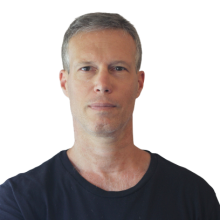
Dr. Izack Cohen to Launch the Industrial and Information Systems Engineering Program
The program was approved by the University and was submitted for approval of the CHE. In addition, a new modeling and process mining lab is already accepting grad students
Dr. Izack Cohen’s specialty in complex process analysis can be applied to the COVID-19 reality: “The world we live in is one of the processes, a series of interconnected actions performed in order to achieve a certain goal. Caring for a hospital patient, a business process, a complex development project, and even food prep in a restaurant kitchen - they’re all processes. Take the restaurant: If we can automatically identify the state of the situation based on information received from various sensors such as cameras or motion trackers, we can send diners automatic notifications when their dishes are about to arrive, handle possible delays, and even check and see whether or not the dish was prepared according to the recipe,” he explains. “This model can be applied to a variety of complex processes and is also relevant to pandemics. Information received from location sensors, medical inspections, complaints about symptoms, questionnaires filled in by the general public - all can help to analyze the pandemic’s progress, identify actions that lead to elevated infection rates, the conditions in which infection occurs and where the next outbreak would be. For example, a certain activity might only lead to infection under certain conditions of duration, environment, etc. If we could identify specific infection conditions, we could keep doing the activities but avoid one of the infection conditions, thereby decreasing it.”
-

Congratulations, doctoral student Alex Glik
Congratulations, doctoral student Alex Glik of Dr. Shahar Alon's lab, for winning the CHE scholarship for excelling doctoral students in Hi-Tech. Alex's research focuses on the intercellular location of RNA molecules inside nerve cells, using super-resolution imaging and spatial genomics.
-

Nanotechnological radiation to improve cancer treatment
Hayadan.org wrote about doctoral student Eli Varon's research, in which he develops technology for personalized cancer treatment using nano-particles and Machine Learning models.
Photo: depositphotos.com -
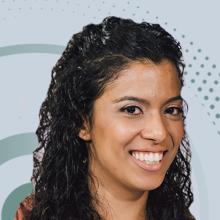
On a Mission to Deliver Drugs Efficiently
Doctoral student Adi Anaki develops tools for delivering drugs via exosomes. Her work has earned her the CHE’s Levzion scholarship.
-
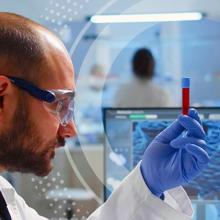
The Faculty of Engineering’s winners of the ISF grants
Earlier this month, the winners of the Israel Science Foundation scholarship were announced, and no fewer than 50 of those are from Bar-Ilan. Culminating at 40 million ILS, the scholarship funds will be divided among the winners, including four faculty members from the Faculty of Engineering.
-

Studying the brain in real environment
Meet Dr. Nisan Ozana, our new faculty member who specializes in neurophotonics: a combination of electro-optics and neuroscience for clinical and functional purposes



